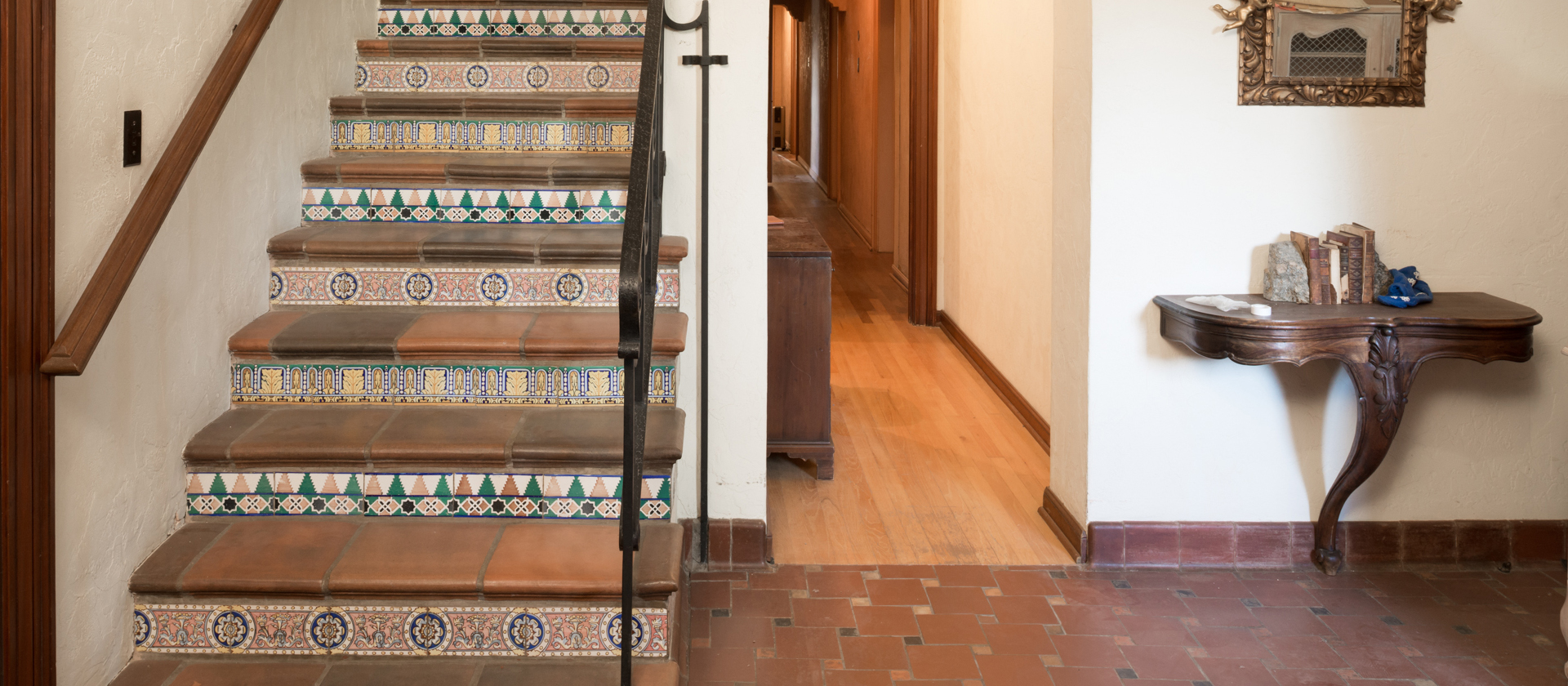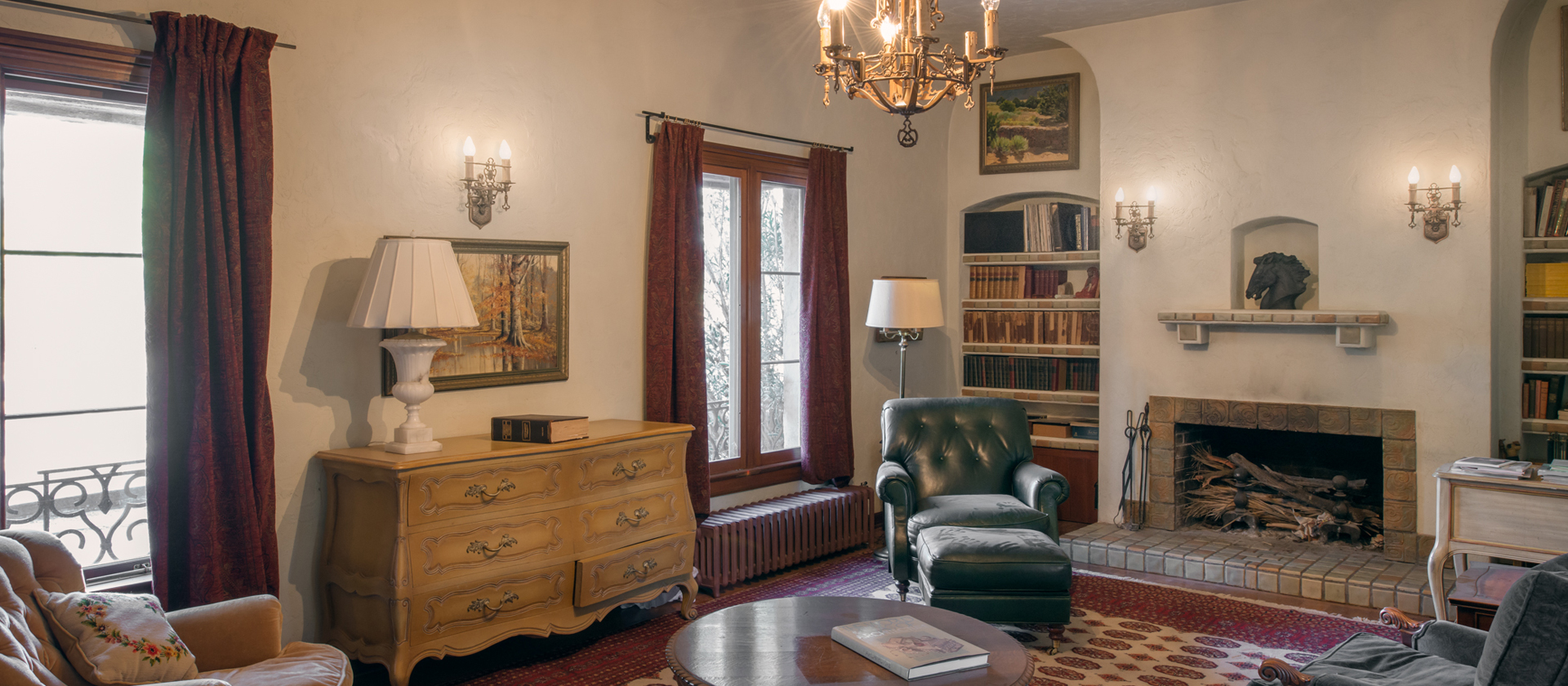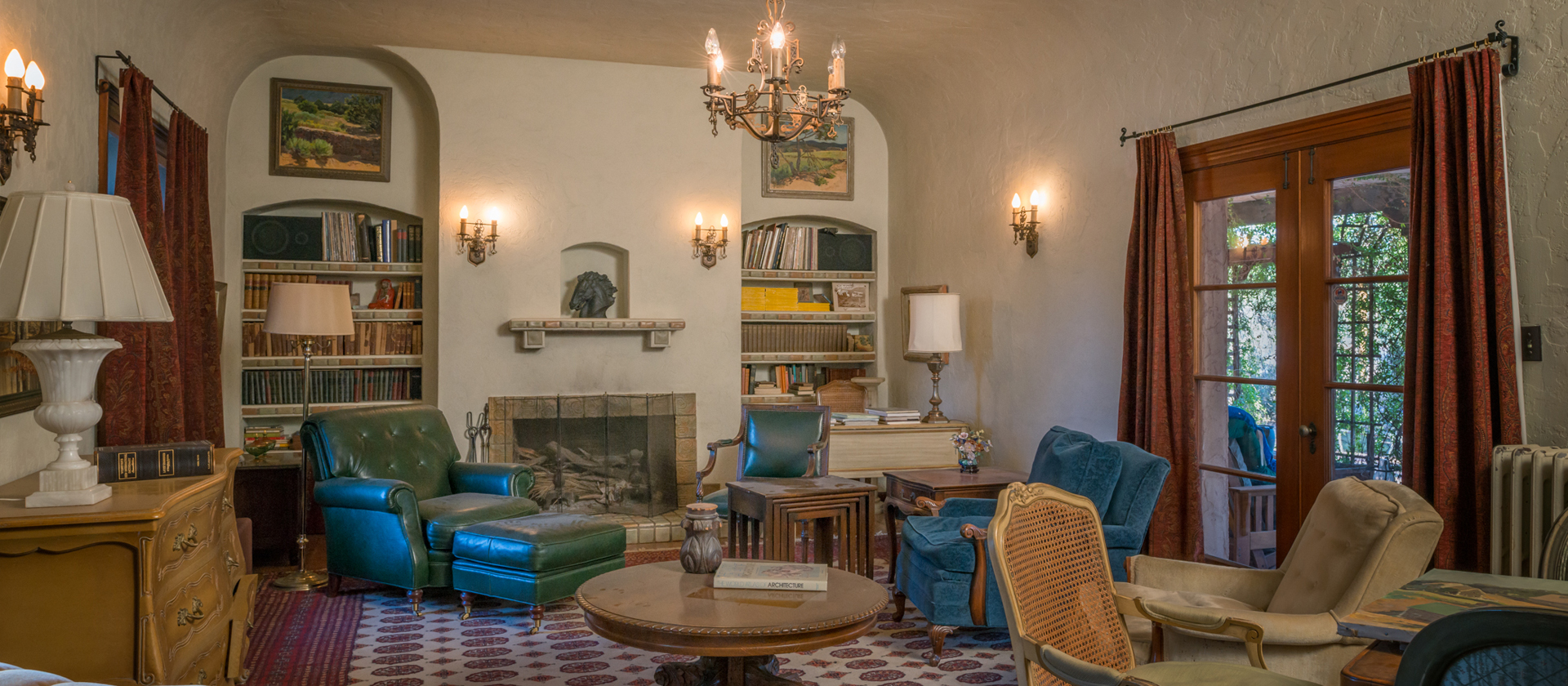Roy Place was also responsible for the most prominent feature of Colonia Solana: the El Con Water Tower. Designated as a City of Tucson Historic Landmark, the El Con Water Tower was built in 1928 by Martin Schwerin to serve the then new subdivision of Colonia Solana. In 1932, Roy Place designed the ornate tower building enclosing the metal frame, masking the 50,000 gallon tank, and highlighting the area’s elegant housing development.
Stephen Child (1866-1936), the landscape architect for the Colonia Solana subdivision, was strongly influenced by the Parks traditions and the American Beautiful movement. The rural feel of Colonia Solana is a result of Child’s use and enhancement of the natural landscape and its features. Child saw the desert landscape and arroyos as assets to the development rather than obstacles. Instead of filling the washes, as was typically done, he emphasized them and incorporated them into the design. He stressed the importance of creating “Arroyo Chico Parque” with parallel roads and footpaths planted with native desert plants, which have remained features that continue to define the feel of the neighborhood.
The Voorhees-Pattison House is one of the important pre‑WWII revival residences constructed in the Colonia Solana Subdivision. The subdivision plat for Colonia Solana was approved by the City of Tucson and by Pima County in 1928. At that time, the planned subdivision was located in the desert east of the Tucson city limits and a little southwest of the El Conquistador Resort Hotel construction site. The hotel was opened in 1928 but was razed in the 1960’s to make way for a shopping center. Tucson has since grown around and far beyond the neighborhood. Arterial streets on two sides and two streets adjacent to Reid Park on the other two sides define the district boundaries. El Encanto Estates and the El Con Shopping Center to the north and Reid park to the east and south provide a strong permanent buffer. Neighborhood development exists only to the west. Due to the stability of the surrounding area, strength of community plan and subdivision layout, retention of original desert landscaping and deed restrictions, Colonia Solana retains a distinct sense of privacy and place.
Voorhees-Pattison House Historic Landmark Designation Process
(08/18/2015) Pre-application Meeting, City of Tucson Preservation Office
(09/11/2015) Submission, Historic Landmark Application
(12/21/2015) Public Meeting, Tucson-Pima County Historical Commission Plans Review Subcommittee Unanimous Recommendation for Historic Landmark Designation.
(01/13/2016) Public Meeting, Tucson-Pima County Historical Commission – Unanimous
approval of Legal Action Report for Historic Landmark Designation.
(02/23/2016) Public Meeting, Study Session of Mayor and Council – Unanimous vote to Initiate Historic Landmark Overlay Designation through rezoning.
(03/04/2016) Pre-submittal Conference Request
(03/08/2016) Submission, Historic Landmark Overlay Rezoning application
(03/10/2016) Pre-submittal Meeting, Development Services Staff
(03/23/2016) Notification, Neighborhood Meeting notice mailed.
(04/12/2016) Neighborhood Meeting
(04/15/2016) Submission, Neighborhood Meeting Minutes to Development Services
(05/20/2016) Installation, Historic Landmark rezoning notification sign
(06/07/2016) Call with Development Services Staff
(06/09/2016) Public Hearing, Zoning Examiner (Meeting I)
(06/16/2016) Public Hearing, Zoning Examiner (Meeting II)
(08/09/2016) Mayor and Council Unanimous vote to designate as a Historic Landmark.
(09/07/2016) Formally Designated a City of Tucson Historic Landmark




